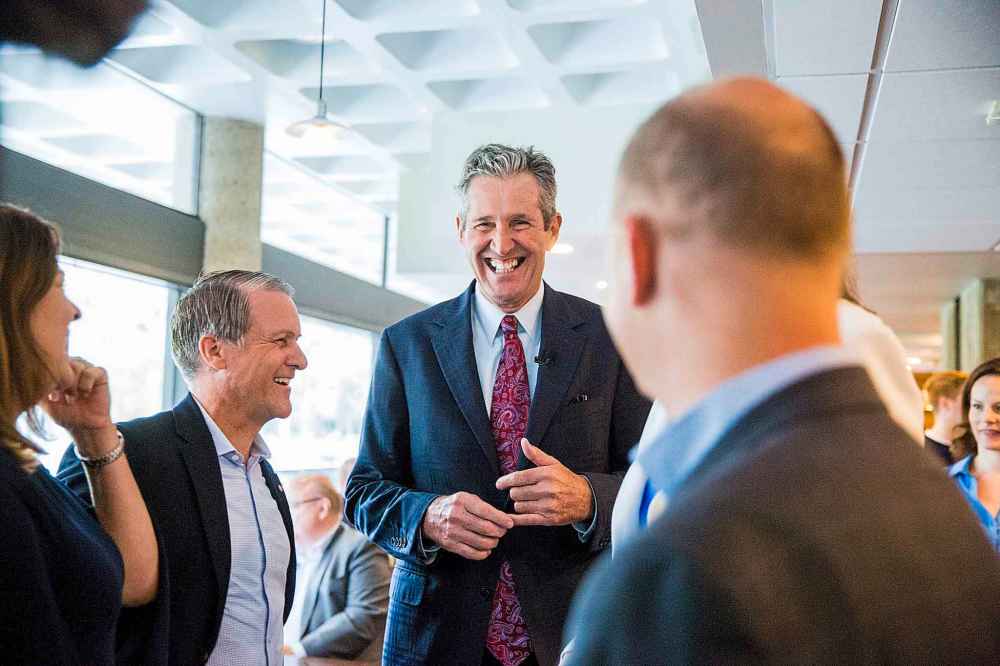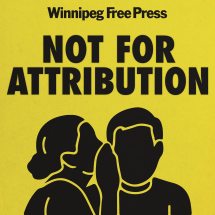Brian Pallister makes big, bold promises* *That he won't be around to see come to fruition
Read this article for free:
or
Already have an account? Log in here »
To continue reading, please subscribe:
Monthly Digital Subscription
$1 per week for 24 weeks*
- Enjoy unlimited reading on winnipegfreepress.com
- Read the E-Edition, our digital replica newspaper
- Access News Break, our award-winning app
- Play interactive puzzles
*Billed as $4 plus GST every four weeks. Offer only available to new and qualified returning subscribers. Cancel any time.
Read unlimited articles for free today:
or
Already have an account? Log in here »
Hey there, time traveller!
This article was published 03/09/2019 (2009 days ago), so information in it may no longer be current.
The Progressive Conservatives signalled the beginning of the end of the 2019 election campaign Tuesday, revealing a long and reportedly complete list of big, bold pledges that came with a collection of even bigger, bolder asterisks.
In total, the Tories peg the total cost of their campaign platform at $856 million. However, at a news conference, PC Leader Brian Pallister unveiled other promises that would, over an extended period of time, nearly double the total value of all the things he is using to convince Manitoba voters to give him another term in office.
At the top of that list is a pledge to eliminate the education portion of property taxes. Once fully realized, this would eliminate more than $800 million in revenue the province currently collects to support public education and save homeowners, on average, about $2,000.

The province has traditionally offset education levies with tax credits that are neither effective nor particularly transparent.
Others have dreamed about eliminating the education levy; NDP premier Gary Doer mused openly about it in the 2000s. However, the overall price tag, even after deducting the value of tax credits, was considered untenable.
Pallister is many things, but he’s no fool when it comes to fiscal matters. That’s why he is using the campaign to unveil a promise that won’t start to materialize for two years — the rough target date for retiring the deficit — and then take another eight years or so to fully implement.
With such a timetable, it’s hardly surprising the PC leader could not name a single government program or service he will have to cut to help pay for the loss of more than $800 million in annual revenue. Pallister doesn’t have to — it is widely believed he will retire as soon as the budget is balanced.
The nuts and bolts of paying for an $800-million tax expenditure will largely be left to the next leader, making it an intriguing, but mostly meaningless, part of the Tory platform.
PC militants will point out, with more than a little justification, this campaign is rife with pledges that blend unfounded optimism with questionable mathematics. And so let it be said here neither the NDP nor Liberals, nor even the Greens, have offered a platform built on a foundation of sensible, sustainable fiscal logic.
(Asterisk: the Greens will unveil their own plan to eliminate the education levy Wednesday. The contrast between the Tory and Green plans should prove interesting.)
Still, even in a campaign bereft of practical ideas, there is an element of mystery to the Tory platform that makes it stand out.
In total, Pallister promised $856 million in tax cuts and program enhancements over the next four years. That is a pretty robust spending spree from a leader who has strangled government expenditures over the past three years.
How, you may ask, will he pay for all these goodies?
Pallister said he would produce a $200-million windfall form the sale of “unusable land and properties.” More savings will come from a second, 15 per cent cut in the management ranks of the provincial civil service. However, there aren’t a lot of other concrete proposals to cover the platform costs.
Pallister promised a $325-million savings from as-yet unidentified efficiency proposals from front-line civil servants and health-care workers. He said there would be $100 million in as-yet unspecified operational savings to come from “an internal value for money review,” and yet another $200 million from as-yet unrealized modernizing government procurement.

That means Pallister has, at the current moment, no firm idea how he is going to find $625 million, or three-quarters of the money he needs to pay for his campaign pledges. And absolutely no idea how to pay for the elimination of the education levy.
In some ways, voters should not be surprised at the amount of steam that has been blown into Pallister’s re-election platform. We saw a version of this strategy at work in 2016.
In that election, Pallister flatly denied any suggestion he would invoke an austerity agenda, and talked instead about “bending the curve” on government spending. However, he did not explain how he would accomplish that lofty goal.
Three years later, we can see in some areas of government, he did indeed just bend the upward trajectory of spending. But in the largest portfolios, notably health and education, annual spending increases were so close to zero they functioned as cuts after accounting for the impact of inflation and population growth.
Many voters will remember Pallister’s main pledge from 2016 — to cut the provincial sales tax by one point — was accomplished on schedule in this past budget. However, what Pallister forgot to mention was the true cost of this one pledge: a nine-figure cut to infrastructure spending.
Almost all campaign promises have an asterisk attached. In this campaign, however, the biggest asterisk appears to be attached to the leader of the governing Tories.
It’s there to remind people that, regardless of the pledge, he is making a bunch of promises he will not be around to see brought to fruition.
dan.lett@freepress.mb.ca

Dan Lett
Columnist
Born and raised in and around Toronto, Dan Lett came to Winnipeg in 1986, less than a year out of journalism school with a lifelong dream to be a newspaper reporter.
Our newsroom depends on a growing audience of readers to power our journalism. If you are not a paid reader, please consider becoming a subscriber.
Our newsroom depends on its audience of readers to power our journalism. Thank you for your support.



1.jpg?h=215)






